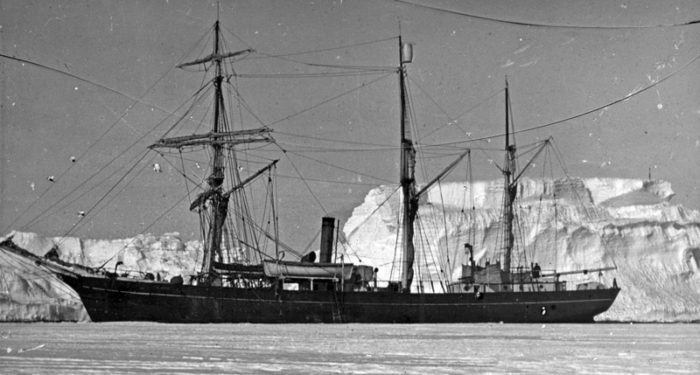On January 16, 1909, explorers Douglas Mawson and Alistair Mackay David Edworth, led by Ernest Shackleton, were able to locate the south magnetic pole-southernmost point reached to date, during an expedition to Antarctica.
The first of three trips led by the Anglo-Irish to the frozen continent was named Nimrod expedition, known to history as the “Farthest South”.
The three years expedition also included the first ascent of Antarctica’s Mt. Erebus and the discovery of a passage through the formidable Beardmore Glacier
Shackleton was knighted for his efforts by King Edward VII, but the expedition has to be counted as only a partial success because his stated goal of reaching the geographic South Pole was not achieved.
The expedition came to within 97 nautical miles of the pole — 88 degrees, 23’S — before turning back.

Nimrod Expedition (back story)
The expedition lacked governmental or institutional support, and relied on private loans and individual contributions. It was beset by financial problems and its preparations were hurried. Its ship, Nimrod, was less than half of the size of Robert Falcon Scott’s 1901–04 expedition ship Discovery, and Shackleton’s crew lacked relevant experience. Controversy arose from Shackleton’s decision to base the expedition in McMurdo Sound, close to Scott’s old headquarters, in contravention of a promise to Scott that he would not do so. Nevertheless, although the expedition’s profile was initially much lower than that of Scott’s six years earlier, its achievements attracted nationwide interest and made Shackleton a public hero. The scientific team, which included the future Australasian Antarctic Expedition leader Douglas Mawson, carried out extensive geological, zoological and meteorological work. Shackleton’s transport arrangements, based on Manchurian ponies, motor traction, and sled dogs, were innovations which, despite limited success, were later copied by Scott for his ill-fated Terra Nova Expedition.
On his return, Shackleton overcame the Royal Geographical Society’s initial scepticism about his achievements and received many public honours, including a knighthood from King Edward VII. He made little financial gain from the expedition and eventually depended on a government grant to cover its liabilities. Within three years his southernmost record had been surpassed, as first Amundsen and then Scott reached the South Pole. In his own moment of triumph, Amundsen nevertheless observed: “Sir Ernest Shackleton’s name will always be written in the annals of Antarctic exploration in letters of fire.”

